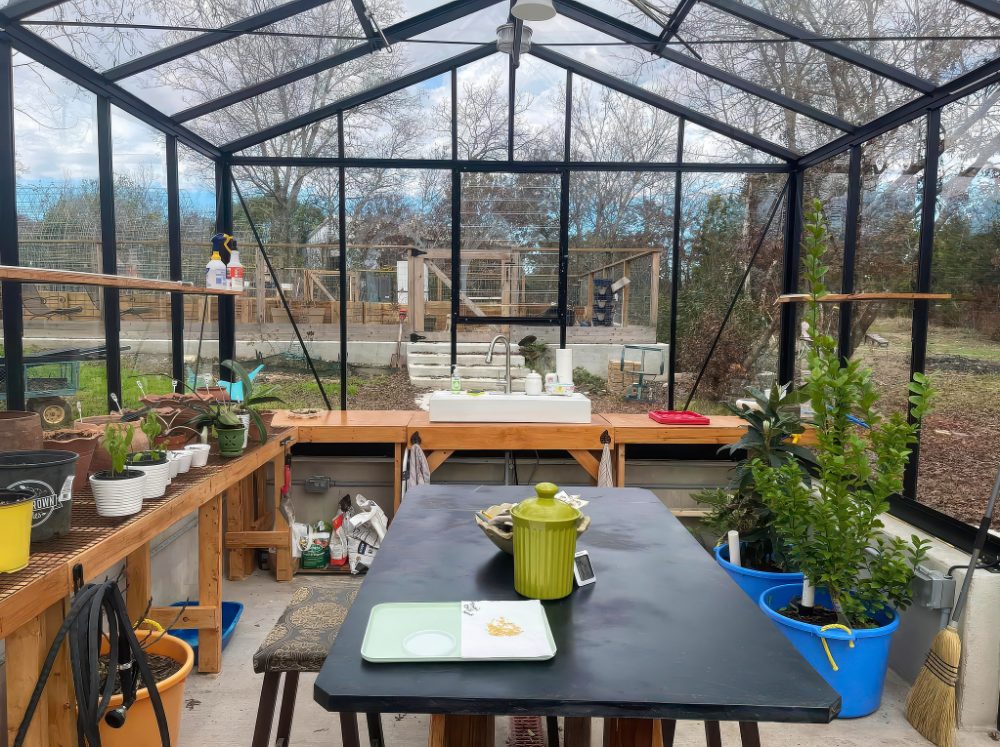Growing plants in a greenhouse is fun and helpful. It lets you grow plants all year. But to grow plants well, you need good space. Shelving in a greenhouse is very important. It helps keep plants organized and saves space. This guide will explain how to set up greenhouse shelving step by step. You will learn what shelves are best, how to place them, and how to use them well.
Why Use Shelving in a Greenhouse?
Shelves make your greenhouse neat. They let you use vertical space. This means you can grow more plants in less area. Shelves also help keep plants off the ground. This stops dirt and water problems. Plants get better air and light on shelves. It is easier to care for plants when they are on shelves too.
Without shelves, plants sit on the floor. This can cause many problems:
- Plants get dirty and wet.
- It is hard to reach all plants.
- You use less space for growing.
- Pests and diseases may spread more.
Shelves fix these problems. They make your greenhouse better for plants.
Types of Greenhouse Shelving
There are many types of shelves. Choosing the right type helps plants grow well.
| Type | Description | Best For |
|---|---|---|
| Wire Shelving | Metal shelves with open grids. | Good air flow and water drainage. |
| Wooden Shelves | Made of wood boards or planks. | Strong and holds heavy pots. |
| Plastic Shelving | Lightweight and easy to clean. | Good for small plants and seedlings. |
| Metal Shelving | Strong and durable metal racks. | Holds many plants and heavy pots. |
| Hanging Shelves | Shelves that hang from the ceiling. | Save floor space, good for small pots. |
Wire and metal shelves are popular. They let water pass through and air move freely. Wooden shelves look nice but can get wet and rot. Plastic shelves are light but may not hold heavy pots.

Credit: greenhouseemporium.com
Steps to Set Up Greenhouse Shelving
Follow these easy steps to set up shelves in your greenhouse.
1. Measure Your Greenhouse Space
Measure length, width, and height of your greenhouse. Write down these numbers. You need to know how much space you have. This helps you plan shelf size and number.
2. Decide The Shelf Type
Think about what you will grow. Pick shelf type that fits your plants. For many plants, wire or metal shelves are good. For heavy pots, choose strong shelves.
3. Plan The Shelf Layout
Draw a simple map of your greenhouse floor. Mark where shelves will go. Leave space to walk between shelves. About 2 feet space is good for walking and carrying pots. Arrange shelves so all plants get sunlight.
4. Buy Or Build Shelves
You can buy ready-made shelves or build your own. Building is cheaper but takes time. Use strong materials like metal or treated wood. Make sure shelves are safe and steady.
5. Install Shelves Carefully
Put shelves in the greenhouse. Use a level tool to make shelves flat. Flat shelves stop pots from falling. Attach shelves to walls or floor if needed. This keeps shelves from moving in wind or when bumped.
6. Place Plants On Shelves
Put plants on shelves. Place bigger pots at the bottom shelves. Smaller pots go on top shelves. Group plants with similar sunlight needs together. This helps them grow better.
Tips for Using Greenhouse Shelving
- Keep Shelves Clean: Remove dead leaves and dirt often.
- Water Carefully: Use watering cans or drip systems to avoid flooding shelves.
- Check Air Flow: Do not overcrowd shelves. Plants need fresh air.
- Rotate Plants: Move plants so all get light evenly.
- Use Trays: Put trays under pots to catch water.
- Label Plants: Use tags to know plant names and care needs.

Credit: greenhouseemporium.com
Benefits of Good Shelving in a Greenhouse
Good shelving makes your greenhouse better. Here are key benefits:
- More Space: Shelves let you use vertical space well.
- Better Plant Health: Plants get good air and light.
- Easy Care: You can water and check plants quickly.
- Cleaner Greenhouse: Plants stay off dirty ground.
- Organized Plants: You can group and label plants easily.
Common Mistakes to Avoid
- Overcrowding: Putting too many plants on shelves blocks air and light.
- Unstable Shelves: Weak or wobbly shelves can break and harm plants.
- Poor Water Drainage: Closed shelves can hold water, causing root problems.
- Wrong Shelf Height: Shelves too high or low can make plant care hard.
How to Maintain Greenhouse Shelving
Keep shelves strong and clean to last long. Here are simple maintenance steps:
- Check shelves for damage regularly.
- Clean shelves with mild soap and water.
- Fix loose screws or nails immediately.
- Repaint or treat wooden shelves yearly.
- Remove rust from metal shelves early.
Frequently Asked Questions
What Materials Are Best For Greenhouse Shelving?
Metal, plastic, and treated wood are ideal. They resist moisture and last long.
How Do I Choose The Right Shelving Size?
Measure your space first. Consider plant size and growth needs for best fit.
Can I Install Shelving Myself?
Yes, with basic tools and instructions. Follow safety guidelines for best results.
What Is The Purpose Of Greenhouse Shelving?
Organizes plants. Maximizes space. Improves plant health with better light and air access.
Conclusion
Setting up greenhouse shelving is easy and smart. It helps plants grow better and saves space. Choose the right type of shelves for your plants. Plan your space well and install shelves safely. Use shelves to keep plants organized and healthy. With good shelves, your greenhouse will be neat and productive. Start today, and enjoy your growing plants!
5 min read

